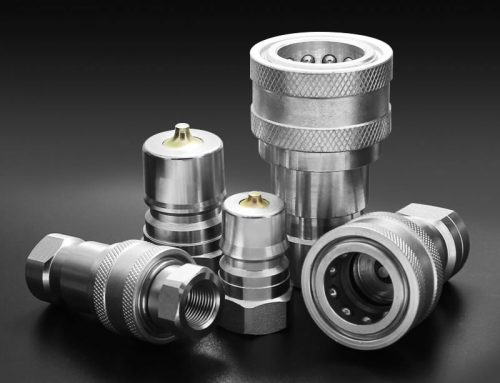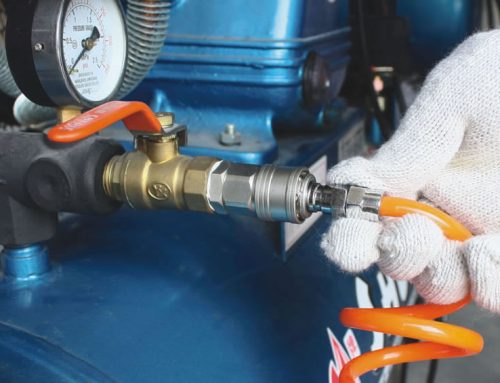What is a Pneumatic Coupling?
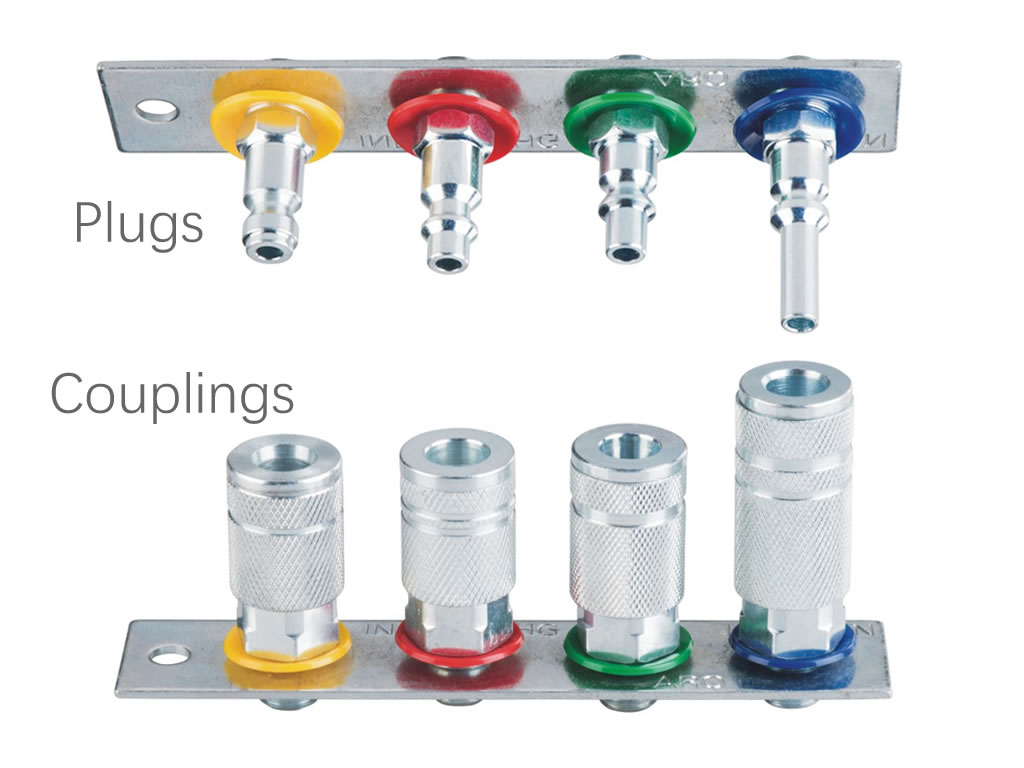
A pneumatic coupling is used to connect compressed air tools to a compressed air line. A pneumatic coupler allows a tool to be easily connected or disconnected to a hose or pipe while it is under pressure.
The system consists of two parts: the quick coupling (the female part) and the plug-in or nipple (the male part). The coupling closes the line automatically as soon as it is disconnected from a component ensuring the system stays pressurized.
In the pneumatics industry, a pneumatic coupling can be referred to by numerous names. For example, an air hose coupling, compressed air coupling, pneumatic coupling or compressor coupling refer to the same product. Fitting can also be used instead of coupling.
It is also common to mention the type, such as Orion coupling or Euro coupling. Compressed air couplings are available in different variants for all kinds of applications. However, the hoses and couplings must be suitable for the specific compressed air system. Please note that the term "pneumatic push-in fitting" usually refers to another product and is discussed in our push-in fittings article. These are one-piece couplings where a pneumatic hose can easily be inserted to make a leakproof connection.
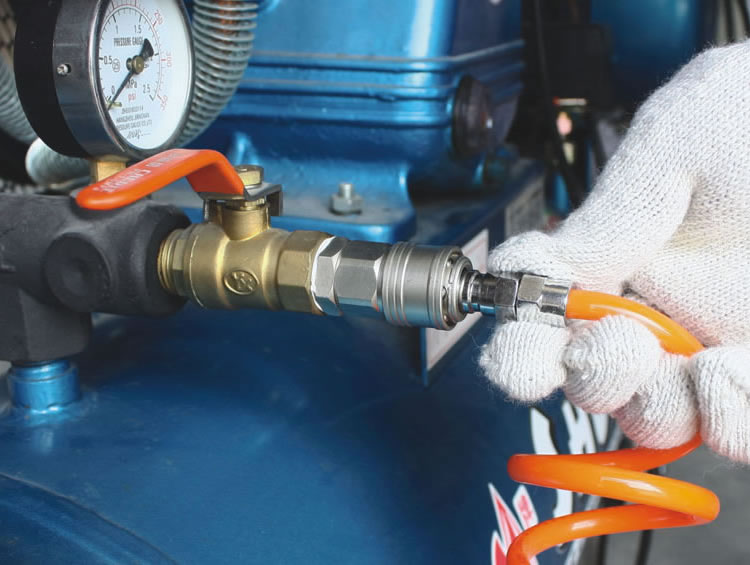
Different types of pneumatic couplings
Worldwide, there are numerous types of pneumatic couplings. For the European market, the Euro and Orion coupling are the most widely used.
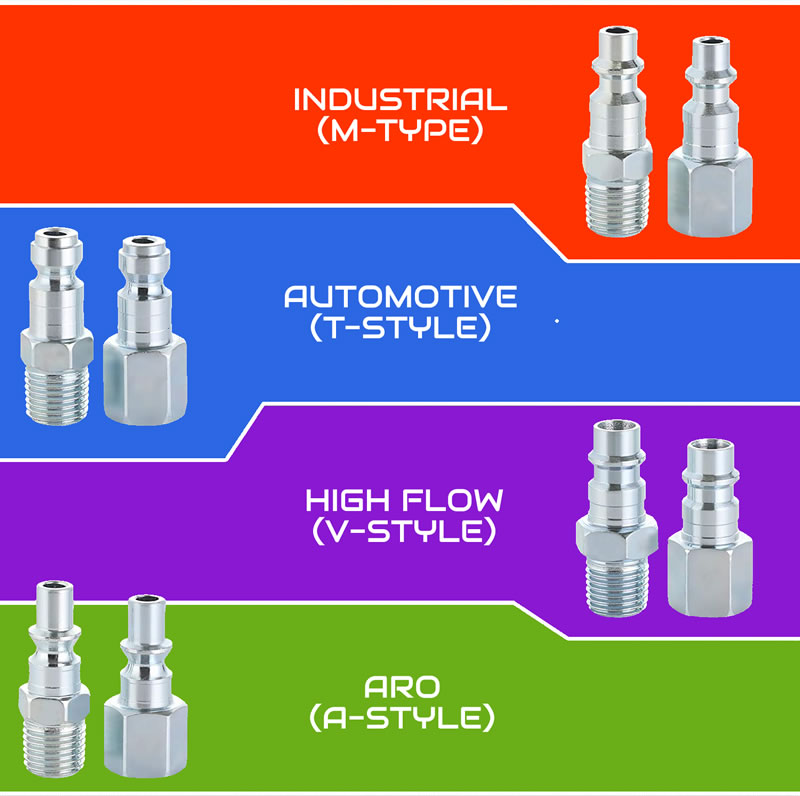
Euro vs Orion coupling
In Europe, the Orion 5.5 (a standard from Sweden) and the Euro 7.2 (a standard from Germany) are the most common standards, whereby the Euro is often preferred. The standard Euro 7.2 quick couplings have a larger diameter than the Orion 5.5. Please note that the ARO/Orion 5.5 couplings have a similar size and shape as the Euro 7.2 couplings, however, they are not compatible! The Orion couplings are especially popular in the Benelux and Switzerland. The most popular compressed air couplings are shown in the table below.
Coupling diameter (DN)
The airflow and internal diameter are two important factors to take into account when choosing the right pneumatic plug-in coupling. The DN is the internal diameter (mm) of the coupling on the plug-in side. A larger passage will result in more air capacity and a smaller energy loss. Because the output of the coupling can have a smaller diameter, the diameter at the plug-in side is not the only internal diameter that needs to be taken into account.
Large diameter hoses or tubes are usually recommended for air transport through the pneumatic system. At the end of the line where the compressed air equipment is connected, thinner handheld hoses are usually used. Make sure that tubes or pipes are always on a decline slope. This will improve the flow of any condensate water to the nearest drain. The accumulation of condensate in the pipes, hoses, or tubes is bad for pneumatic component performance and service life. To learn more about the installation of condensate drains, read our article on how to install a condensate drain.
Pneumatic couplings are available with or without a valve. A valve in an air coupling is used to prevent the loss of compressed air. A valve is rarely required for semi-permanent connections, to prevent obstruction of the air flow. However, disconnecting connections can be dangerous if a hose still contains compressed air and is not properly held during disconnection.
Versions and abbreviations
A pneumatic coupling consists of a plug-in (male part) and a coupler (female part). The quick-release coupling connects to the plug-in on one side, while the other side has, for example, a thread or a hose connection. This thread can be an internal thread (female) or an external thread (male). The hose connection can be a union nut connection where the hose is squeezed with a nut. It can also be a pillar connection in which the hose is pushed over a pillar and then fixed with a hose clamp. A pillar connection is usually the most reliable connection because it is clearly visible when the connection is loosened. A hose clamp has sharp edges that can cause injuries. However, this can easily be solved by placing a heat shrink tube over the hose clamp.
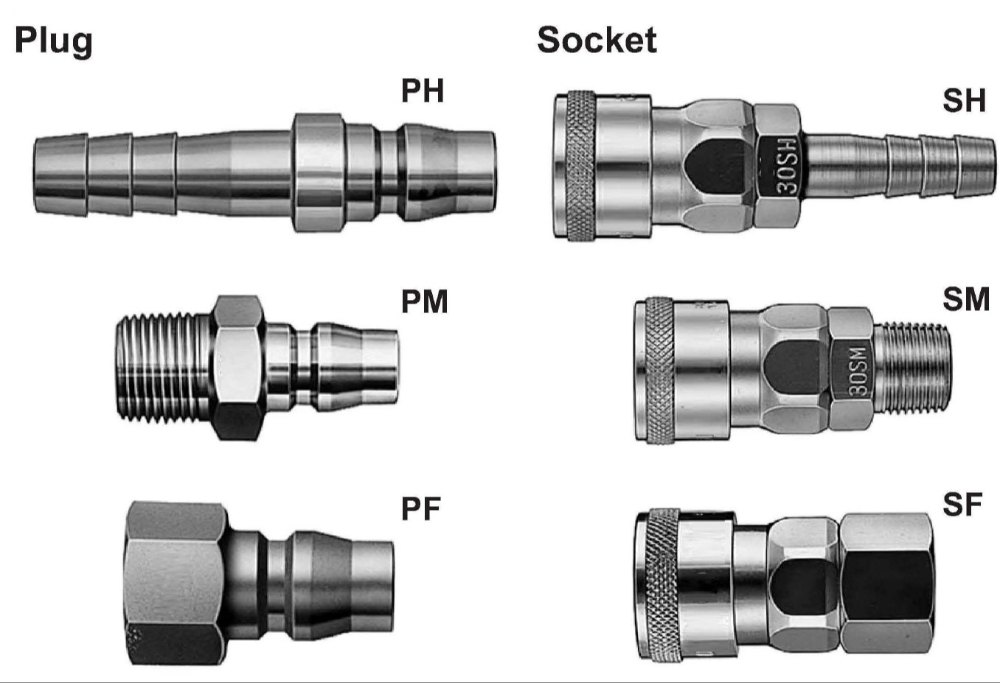
There are a number of general abbreviations for pneumatic air couplings.
| Abbreviation | Meaning | Inlet | Exhaust |
| SM | Socket Male | Coupler | External thread |
| PM | Plug Male | Plug | External thread |
| SF | Socket Female | Coupler | Inner thread |
| PF | Plug Female | Plug | Inner thread |
| SH | Socket Hose | Coupler | Hose connection (pillar) |
| PH | Plug Hose | Plug | Hose connection (pillar) |
| SP | Socket PU hose | Coupler | Hose connection (compression) |
| PP | Plug PU hose | Plug | Hose connection (compression) |
Naming of Japanese pneumatic couplings
Japanese quick connectors use the same abbreviations, but this is supplemented with a number for the size. In all cases, the plug has an internal diameter of 7.5 mm. This one is bigger than the crankbait of the Euro and Orion. If the coupling is referred to as XY-N, the following dimensions apply:
| N | P-value | H-value | BSP |
| 10 | 4*6 mm | 8 mm (5/16") | 1/8" |
| 20 | 5*8 mm | 8 mm (5/16") | 1/4" |
| 30 | 6.5*10 mm | 10 mm (3/8") | 3/8" |
| 40 | 8*12 mm | 12 mm (1/2") | 1/2" |
An example of a name is SH-30. This means that it is a Socket Hose with a value of 30. A Socket Hose is a quick connector (the female part) with a hose barb connection. As this is a hose pillar, in table 3 we look at the H-value column at N = 30. The inside diameter of the hose is 10 mm.
Another example is SP-40. SP-40 stands for Socket PU hose, i.e. a quick coupling with a compression fitting. Table 3 shows that the compression fitting is suitable for a hose with an inner diameter of 8 mm and an outer diameter of 12 mm.
It can therefore be concluded that the diameter of SH-30 and PH-30 is greater than that of SP-40 and PP-40. For these pneumatic couplings the inch sizes are sometimes used, for example 1/2" thread hose male instead of PM-40. Codings are also defined differently, such as 40PM in this case.
Characteristics of pneumatic couplings
Thread
Most plug-in air couplings use BSP (British Standard Pipe) thread. The BSP is an international standard that is applied worldwide, except in the United States and Canada, where the NPT thread is common. A thread is only compatible with another thread of the same standard (few exceptions). For an overview on thread standards and thread compatibility, read our thread standards technical article.
Materials
The material of the air coupling is important as it affects price, durability, and chemical resistance. View our chemical resistance chart for more information. Common pneumatic air coupling materials are:
- Galvanized steel: These are usually the cheapest steel material choice but are suitable for dry applications.
- Hardened steel: This material is more durable than galvanized steel but is slightly more expensive.
- Stainless steel: This material has very good chemical resistance and durability but comes with an increase in price.
- Plastic: Depending on the quality of the plastic, they can be durable enough for most applications and come at a cheaper price.
The material and quality of the nipple is also important and should be checked when replacing leaking couplings. These are often forgotten because they dont leak themselves. However, a damaged nipple will cause the seal in the quick-release coupling to become defective or damaged. The result is a leakage of precious compressed air. Ultimately, it is more cost-efficient not to save on high quality insert nipples.

